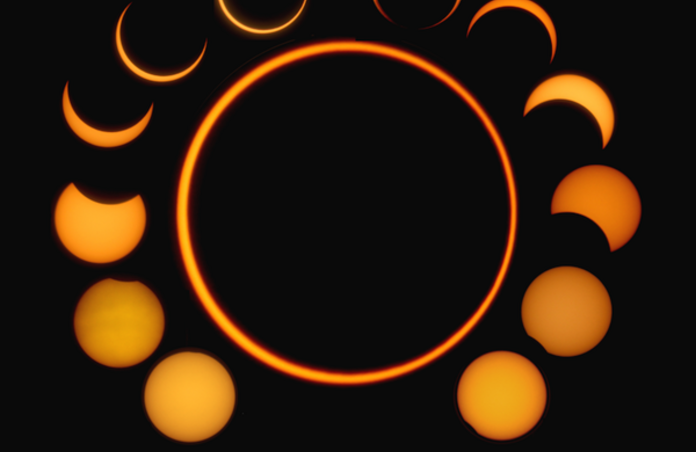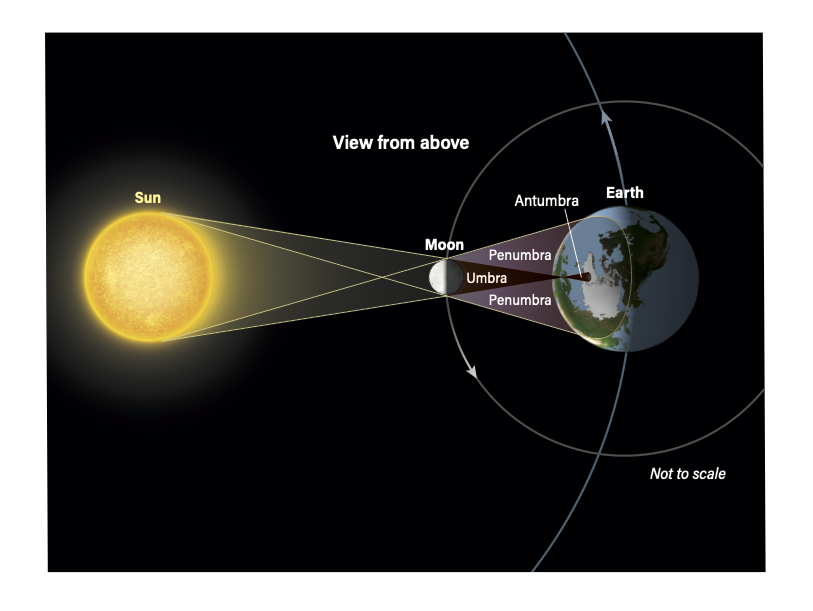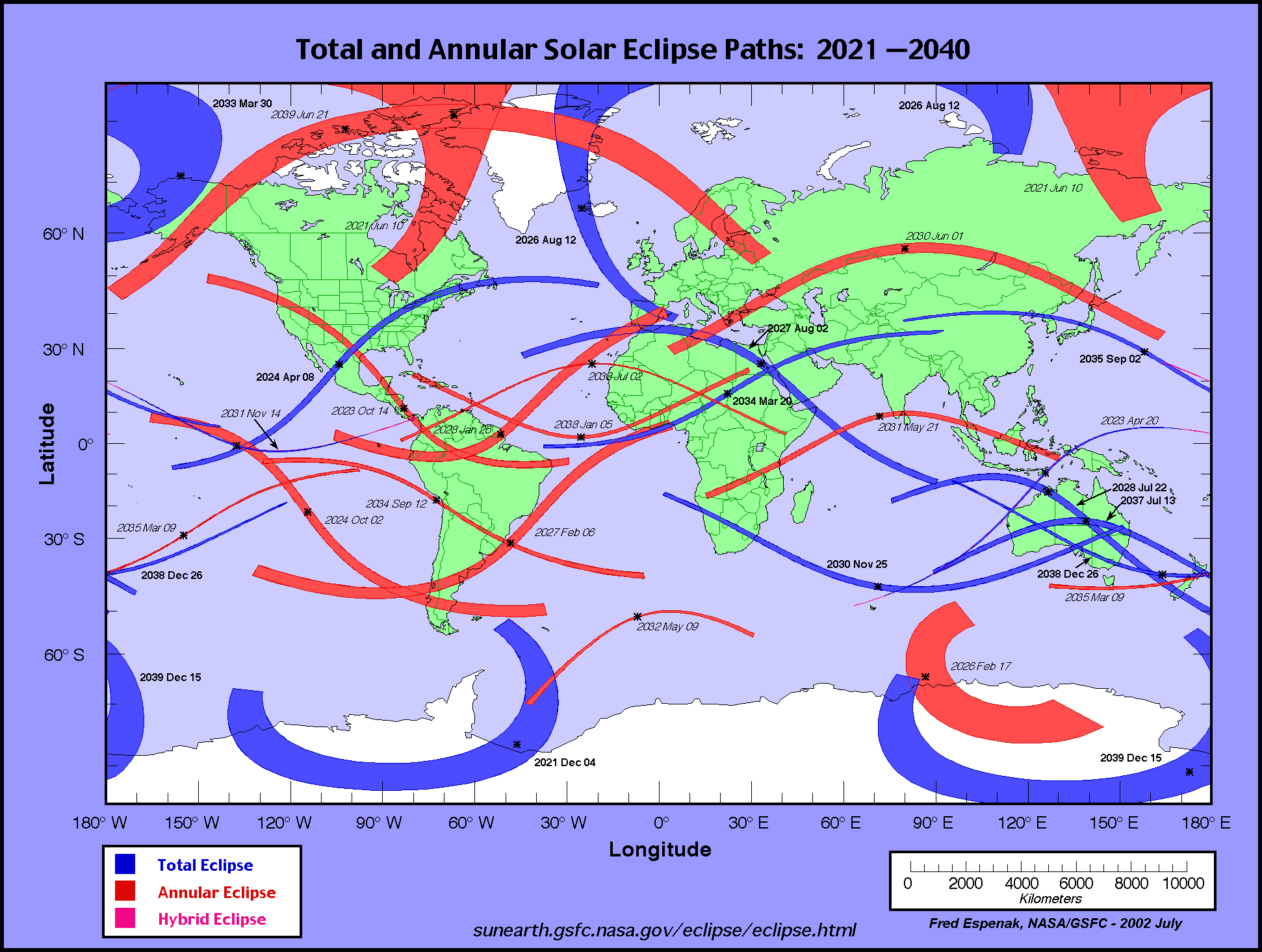June 10, 2021 Annular Solar Eclipse - Get Your Solar Eclipse Glasses Ready

After May’s lunar eclipse, it’s time to get ready for a solar eclipse!
As you might remember from the Super Flower Blood Moon, a lunar eclipse is when the Earth cast a shadow onto the Moon. Instead, a solar eclipse occurs during an alignment (syzygy) where the Moon is between the Sun and the Earth. What will happen on the 10th of June is an annular eclipse, which means that the Moon will appear to be “too small to totally cover the Sun”: there will be a ring of sunlight, or annulus, surrounding it, as opposed to when a total solar eclipse occurs.
You might also recall the concept of umbra and penumbra; here we also have to mention the antumbra, which is an area of the shadow beyond the umbra in the case of the apparent size of the occluding body being smaller than that of the light source. The relative apparent sizes of the Sun and the Moon depend on one hand, on the position of the Earth on its orbit around the Sun, and on the other, on that of the Moon around the Earth. These orbits are elliptical, so the bodies’ distances to each other can vary significantly enough to differentiate between a total and annular eclipse at syzygy.

What’s more, the Moon is slowly moving away from Earth, at a rate of about 3.8 centimetres (1.5 inches) per year. At the same time, the Sun is ageing, which means it will slowly but surely grow larger. NASA has estimated that the last total solar eclipse will occur in 563 million years, so there is still plenty of time for us to enjoy total and annular eclipses, but passed that date, there will only ever be annular eclipses!
Back to this week’s event, what will be the best observing spots? The eclipse will first be visible in the Canadian provinces Ontario, Quebec and Nunavut; a nice destination at this time of the year is the Migratory Bird Sanctuary on Akimiski Island in James Bay, where you could photograph not just the eclipse but also Canadian geese or the Atlantic brant. After that, an interesting one is Savissivik in Greenland. This is the place where the famous Cape York meteorite, or Innaanganeq meteorite, was found, an iron meteorite that fell on Earth about 10 000 years ago - the heaviest fragment weighs 31 metric tons (with 7 other known fragments over 250 kg), which makes it the second largest in the world. Note that the Inughuit, local Inuit, have used the iron to make tools for decades, so the initial block would have been even more monstruous. The eclipse’s next destination is the North-East of Russia, where the annularity will similarly be visible for just over 3 and a half minutes. It will end its path just before the Sea of Okhotsk, an arm of the Pacific Ocean between Russia and the northernmost Japanese island Hokkaido.
also showing a sketch of the percentage of the Sun covered above/below the path
Weather allowing, you will be able to observe the Sun’s light being partially blocked in other parts of the world too (around 25% in the UK, 10% in mainland Europe), within the Moon’s shadow’s penumbra. Don’t forget that staring at the sun directly can cause eye damage and that there are eclipse glasses to protect you!
Cover Image: Solar eclipse, A. Singh and S. Abrol
Image credits:
1 - Diagram, R. Kelly for Astronomy
2 - Map of upcoming solar eclipses, F. Espenak/NASA/GSFC
3 - 10th June eclipse path, M. Zeiler

